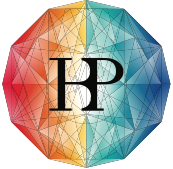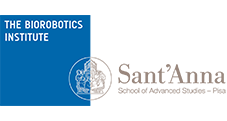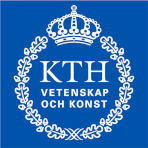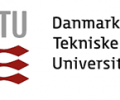NRP: the team
The NRP is the result of the efforts of several HBP researchers who contributed to its design and development since 2013. The institutions supporting these efforts as well as our past collaborations are listed below.
Chair of Robotics, Artificial Intelligence and Real-Time Systems. The Chair of Robotics, Artificial Intelligence and Real-Time Systems is part of the Technische Universität München’s (TUM) Department of Informatics. The group is headed by Professor Alois KNOLL, and its primary mission is the research and education of machines for perception, cognition, action and control. More specific research topics include, but are not limited to, algorithms (e.g. for collision avoidance and path planning), computer architecture for embedded systems, graphics and simulation using the latest rendering devices, motor control, machine learning, natural and spoken language, robot programming languages and controllers, and synthetic biology and statistical algorithms for computer vision.
Group Leader: Prof. Dr.-Ing. habil. KNOLL; Scientific coordinator HBP: Dr. Fabrice MORIN.
Research group on Fusing Augmented Reality. Headed by Professor Gudrun KLINKER, the group on Fusing Augmented Reality (FAR) focuses on Ubiquitous Augmented Reality — a combination of ubiquitous computing, wearable computing and augmented reality. FAR’s research focuses on developing technologies that can place virtual information three-dimensionally into real environments, adapting the information provided to users’ location, work context and attentional capabilities. Current work includes the development, use and fusion of tracking technologies in sensor networks, and the use of novel, three-dimensional user interfaces in specific application contexts. Applications developed in the department use a broad range of mobile devices ranging from mobile phones, PDAs and tablet PCs, to HMDs, HUDs, multi-touch displays and steerable laser projectors.
Group Leader: Prof. Gudrun KLINKER.
Group Leader: Prof. Dr.-Ing. habil. KNOLL; Scientific coordinator HBP: Dr. Fabrice MORIN.
Research group on Fusing Augmented Reality. Headed by Professor Gudrun KLINKER, the group on Fusing Augmented Reality (FAR) focuses on Ubiquitous Augmented Reality — a combination of ubiquitous computing, wearable computing and augmented reality. FAR’s research focuses on developing technologies that can place virtual information three-dimensionally into real environments, adapting the information provided to users’ location, work context and attentional capabilities. Current work includes the development, use and fusion of tracking technologies in sensor networks, and the use of novel, three-dimensional user interfaces in specific application contexts. Applications developed in the department use a broad range of mobile devices ranging from mobile phones, PDAs and tablet PCs, to HMDs, HUDs, multi-touch displays and steerable laser projectors.
Group Leader: Prof. Gudrun KLINKER.
Fortiss is a Technical University of Munich (TUM) affiliated institute (An-Institut) for research and technology transfer. As such, it is a fully-fledged academic research institute, while also enjoying the independence granted by its legal form as a not-for-profit LLC (gemeinnützige Gesellschaft mit beschränkter Haftung – gGmbH). The shareholding partnership has been divided between Freistaat Bayern (the Free State of Bavaria) and the Fraunhofer-Gesellschaft zur Förderung der angewandten Forschung e.V. The Free State of Bavaria owns 66%, Fraunhofer owns 33%. Fortiss’ mission is to facilitate research and technology transfer in software-intensive systems and services, thereby triggering future-ready innovation.
Group Leader: Axel VON ARNIM
Group Leader: Axel VON ARNIM
The Computational Neuroscience and Neurorobotics Lab. The Computational Neuroscience and Neurorobotics Lab is part of the Computer Architecture and Technology Department at the University of Granada. The Lab focuses on developing efficient neural simulation engines for real-time closed-loop experiments with brain-body models. It has participated in three European projects investigating these issues, as part of the FP5, FP6 and FP7 programmes. The Lab’s main expertise is in simulating brain modules or neural subsystems such as the cerebellum, and interfacing with real or simulated robots in behavioural experiments. Work at the Lab concentrates on experiment-driven development, and most of the tools it has created have been released under open source licenses. One of the best known is EDLUT — an efficient neural simulator with a strong focus on real-time simulation. The Lab’s main equipment consists of local simulation clusters that are used for massive simulations for brain-body configuration studies.
Group Leader: Prof. Eduardo ROS
Group Leader: Prof. Eduardo ROS
The BioRobotics Institute. The BioRobotics Institute at Scuola Superiore Sant'Anna is an integrated system aimed at innovative research, education and technological transfer. The Institute wants to act as a linking bridge to international centres of knowledge and to create a new concept of engineers that are scientists, inventors, entrepreneurs, able to invent and solve problems, and to create new companies in high technology sectors (biomedical engineering, microengineering, robotics, mechatronics).
Group Leaders: Prof. Cecilia LASCHI; Prof. Dr. Silvestro MICERA
Soft Robotics. The BioRobotics Institute at Scuola Superiore Sant'Anna is an integrated system aimed at innovative research, education and technological transfer. The Institute wants to act as a linking bridge to international centres of knowledge and to create a new concept of engineers that are scientists, inventors, entrepreneurs, able to invent and solve problems, and to create new companies in high technology sectors (biomedical engineering, microengineering, robotics, mechatronics).
Group Leader: Dr. Egidio FALOTICO.
Group Leaders: Prof. Cecilia LASCHI; Prof. Dr. Silvestro MICERA
Soft Robotics. The BioRobotics Institute at Scuola Superiore Sant'Anna is an integrated system aimed at innovative research, education and technological transfer. The Institute wants to act as a linking bridge to international centres of knowledge and to create a new concept of engineers that are scientists, inventors, entrepreneurs, able to invent and solve problems, and to create new companies in high technology sectors (biomedical engineering, microengineering, robotics, mechatronics).
Group Leader: Dr. Egidio FALOTICO.
Department of Computational Biology (CST). CST at the KTH School of Computer Science and Communication is the largest computational neuroscience, neuroinformatics, and neurocomputing centre in Sweden. The CST also leads the Swedish INCF national node. Jörg CONRADT is Associate Professor of Neuronal Computing Systems at KTH (from July 2018). Research in his lab investigates key principles by which information processing in brains works, and applies those to real-world interacting technical systems.
Group Leader: Prof. Jörg CONRADT
Group Leader: Prof. Jörg CONRADT
Former contributing members within HBP
The institutions having supported the efforts in previous stages are listed below.
Data Science Lab. The Data Science Lab is the newly formed lab within the Electronics and information Systems Department. It consists of three former groups known as Reservoir Lab (HBP partner in the Ramp- Up Phase and expert in machine learning, brain-inspired computation and robotics), SySTems (decision theory, system modelling and control theory) and MultimediaLab (multimedia, semantic data, natural language modelling, etc.). As such, it combines the department’s expertise with respect to system modelling, data and signal analysis and data representation. Data Science Lab counts 13 professors and some 80 scientists (PhD students and postdocs) in total.
Group Leader: Prof. Joni DAMBRE
Group Leader: Prof. Joni DAMBRE
Biorobotics Laboratory. The Biorobotics Laboratory (BioRob in short) is part of the Institute of Bioengineering in the School of Engineering at the EPFL. The Lab works on the computational aspects of movement control, sensorimotor coordination, and learning in animals and in robots. We are interested in using robots and numerical simulation to study the neural mechanisms underlying movement control and learning in animals, and in return to take inspiration from animals to design new control methods for robotics as well as novel robots capable of agile locomotion in complex environments. Our research interests are therefore at the intersection between robotics, computational neuroscience, nonlinear dynamical systems, and machine learning.
Group Leader: Prof. Dr. Auke IJSPEERT
Chair in Spinal Cord Repair IRP. The goal of the Chair in Spinal Cord Repair IRP is to increase the understanding of the mechanisms underlying the control of locomotion, and to exploit this knowledge to develop neuroprosthetic interventions to improve motor control recovery after neurological disorders. For this, the group conceives dynamic models of brain and spinal circuits linked to biomechanical models of the limbs, both in animal models and humans. They combine in silico experiments with in vivo manipulations of neural circuits using cell-specific activation and inactivation techniques in transgenic mice, and also conduct clinical evaluations to test our therapeutic strategies in persons with spinal cord injury.
Group Leader: Prof. Dr. Gregoire COURTINE.
Cyberbotics. The Cyberbotics R&D lab was founded in 1998 to further develop the Webots software, originally created at the Swiss Federal Institute of Technology in Lausanne (EPFL). Since then, the Cyberbotics R&D lab has been involved in many collaborative research projects, including FP6 and FP7 European research projects, CTI national research projects, as well as industrial projects (Sony Corp., Aldebaran robotics, Groupe INTRA, etc.). In parallel to this activity, the Cyberbotics R&D lab has been continuously working on improving the Webots software which is now used in more than 1200 research organizations worldwide and became a reference software for robotics simulation.
Group Leader: Dr. Olivier MICHEL.
Laboratory of Psychophysics. The Laboratory of Psychophysics, we investigate visual information processing in human observers with psychophysical methods, TMS, EEG, and mathematical modelling. Main topics of research are: feature integration, contextual modulation, time course of information processing, and perceptual learning. In clinical studies, deficits of visual information processing are investigated in schizophrenic patients.
Group Leader: Prof. Dr. Michael HERZOG
EPFL ENT-R BBP-CORE. Focusing on: Neurorobotics, Activity dynamics in networks of spiking neurons, Closed-loop neuronal control, Computational Neuroscience, Large-scale network simulations, Neural Simulation Tool NEST.
Group Leader: Prof. Marc-Oliver GEWALTIG.
Group Leader: Prof. Dr. Auke IJSPEERT
Chair in Spinal Cord Repair IRP. The goal of the Chair in Spinal Cord Repair IRP is to increase the understanding of the mechanisms underlying the control of locomotion, and to exploit this knowledge to develop neuroprosthetic interventions to improve motor control recovery after neurological disorders. For this, the group conceives dynamic models of brain and spinal circuits linked to biomechanical models of the limbs, both in animal models and humans. They combine in silico experiments with in vivo manipulations of neural circuits using cell-specific activation and inactivation techniques in transgenic mice, and also conduct clinical evaluations to test our therapeutic strategies in persons with spinal cord injury.
Group Leader: Prof. Dr. Gregoire COURTINE.
Cyberbotics. The Cyberbotics R&D lab was founded in 1998 to further develop the Webots software, originally created at the Swiss Federal Institute of Technology in Lausanne (EPFL). Since then, the Cyberbotics R&D lab has been involved in many collaborative research projects, including FP6 and FP7 European research projects, CTI national research projects, as well as industrial projects (Sony Corp., Aldebaran robotics, Groupe INTRA, etc.). In parallel to this activity, the Cyberbotics R&D lab has been continuously working on improving the Webots software which is now used in more than 1200 research organizations worldwide and became a reference software for robotics simulation.
Group Leader: Dr. Olivier MICHEL.
Laboratory of Psychophysics. The Laboratory of Psychophysics, we investigate visual information processing in human observers with psychophysical methods, TMS, EEG, and mathematical modelling. Main topics of research are: feature integration, contextual modulation, time course of information processing, and perceptual learning. In clinical studies, deficits of visual information processing are investigated in schizophrenic patients.
Group Leader: Prof. Dr. Michael HERZOG
EPFL ENT-R BBP-CORE. Focusing on: Neurorobotics, Activity dynamics in networks of spiking neurons, Closed-loop neuronal control, Computational Neuroscience, Large-scale network simulations, Neural Simulation Tool NEST.
Group Leader: Prof. Marc-Oliver GEWALTIG.
Center for Playware. The Center for Playware at Technical University of Denmark (DTU) focuses on modular robotic hardware development, constructionist methods for developing robotic applications, and on the robot morphology-control relationship. The Centre uses its extensive experience in biologically inspired robotics and modern artificial intelligence to develop user-guided approaches based on behaviour-based robotics, evolutionary robotics, multi-agent systems, and neural network control for modular robotic systems. The underlying hypothesis is based on a modular robotics concept, which makes robotic devices applicable in a wide range of areas, and which allows users to generate knowledge with hands-on development of artefact morphology. The Centre collaborates with large companies such as LEGO, and uses insight into modern artificial intelligence, interaction design and modular robotics to create novel intelligent artefacts with a seamless interface for end-users in rehabilitation, therapy, care of children and the elderly, sport, music, education, and home entertainment.
Group Leader: Prof. Dr. Henrik LUND
Group Leader: Prof. Dr. Henrik LUND
The FZI Research Centre for Information Technology (FZI) in Karlsruhe is a non-profit independent research centre with about 160 employees. Its core mission is to facilitate technology transfer of innovative solutions in ICT, and to create a link between academia and industry. FZI consists of four interdisciplinary research divisions working in close collaboration. The department of Interactive Diagnosis and Service Systems (IDS) concentrates on the development of intelligent, mobile service robots and supporting technologies. IDS is involved with a significant number of industry partners, e.g. in the areas of Automated Guided Vehicles, manipulation, tele-operated diagnosis and inspection systems. IDS’ project experiences allowed them to develop agile sensing devices and algorithms that could cope with complex tasks involving robots and humans, and to fulfil robustness and speed constraints needed in industrial applications. The modular software framework MCA2 was developed at FZI, and is being used in different professional applications, such as robust indoor navigation. Recently, this real time capable framework was extended by introducing defined interfaces to ROS (Robot Operating System). The philosophy of the Software Engineering (SE) division is to look at software engineering in its entirety. We therefore analyse, design, develop, adapt, and evolve complex mobile and multi-platform software systems, in addition to the underlying business processes, from an engineering viewpoint, and with continuous quality assurance in mind. SE has been working in more than 50 cooperative and consulting actions on service-orientated software construction, model-driven software engineering, software quality assessment, and legacy software evolution with national and European industry. SE serves numerous SMEs and large companies, such as Siemens, ABB, Nokia, IBM, Deutsche Telekom, Daimler-Chrysler, and BASF. SE’s research contributes regularly to leading technological conferences, including ICSE, WCRE, CSMR, and QoSA.
Group Leader: Prof. Dr.-Ing. Rüdiger DILLMANN
Group Leader: Prof. Dr.-Ing. Rüdiger DILLMANN









